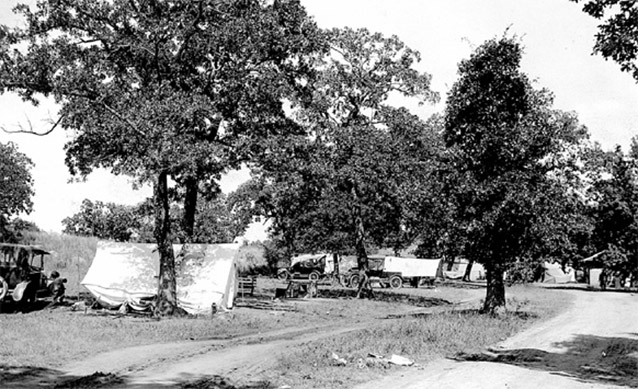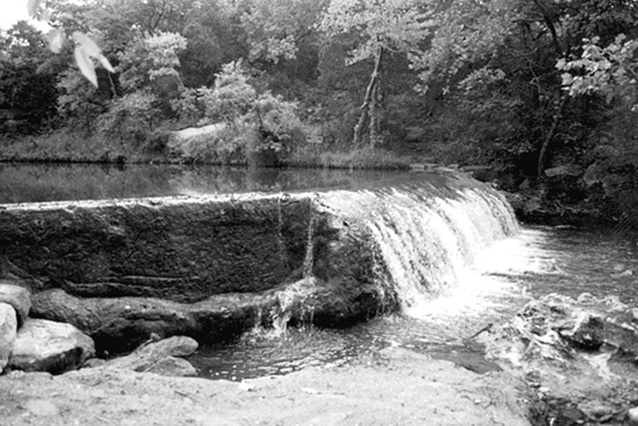At 15 acres, Central Campground is the smallest of the three campground developments within the Platt National Park National Historic Landmark District, located in Chickasaw National Recreation Area of Oklahoma. Central Campground is located just east of Highway 177 and Flower Park. The relatively level landscape is a mix of open and wooded terrain.
Although the area has been somewhat reconfigured to accommodate group camping, the overall landscape is an excellent example of the CCC-era landscape projects in the park. The campground is also associated with the area's segregation history.

NPS / CNRA archives (Photograph CC-110)
Features of the campground include Travertine Creek, which winds through the landscape, as does the park's Perimeter Road. Panther Falls is also located nearby. The area is used for camping and associated recreational activities, including bathing in Travertine Creek.
The Central Campground is significant for its location within the former Platt National Park (a National Historic Landmark District), which is now part of Chickasaw National Recreation Area. The district is important for its association with the development of national park landscapes completed during the Great Depression and funded as part of Franklin Delano Roosevelt’s “New Deal” programs.
Since the early years in the park, the Central Campground area was used for camping and large gatherings. After 1937, it was designated as the campground for African American visitors in the park, representative of the segregated nature of public facilities in the South before the Civil Rights movement. Following 1957, Central Campground became the designated area of the park for large, organized camping groups such as scout and school groups.

NPS
The district embodies the characteristics of the type, period, and methods of construction typical of the Rustic style of park design developed by the National Park Service in the years between World War I and World War II (1916-1942) under the leadership of Thomas Vint. In general terms, Rustic park design limited development to preserve natural scenery, and buildings and structures were designed in harmony with the natural landscape. This meant using hand craftsmanship, local architectural styles and natural materials such as stone, wood, and native plants in the design of each park structure or element.
As part of the larger Platt National Park National Historic Landmark District, the Central Campground exemplifies all of these aspects of National Park Service development, planning, and design. In its site planning, architectural style, landscape architectural design and small scale features, the design of Central Campground explicitly reflects the NPS principles of Rustic design and construction. Though the campground has been somewhat reconfigured to accommodate group camping, the overall landscape is an excellent example of the CCC-era landscape engineering projects undertaken in Platt National Park in the 1930s.
Quick Facts
- Cultural Landscape Type: Designed
- National Register Significance Level: National
- National Register Significance Criteria: A, C
- National Historic Landmark
- Period of Significance: 1933-1940
Landscape Links
Part of a series of articles titled Cultural Landscapes of Chickasaw National Recreation Area.
Last updated: December 30, 2019
